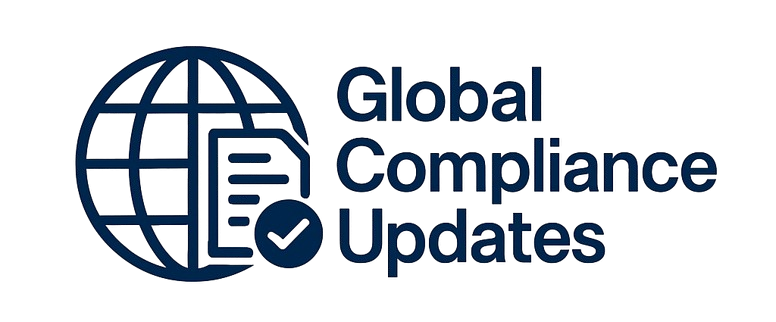A reduction in workforce (RIF) isn’t something that any manager, business owner, or HR professional wants to have to face, but the fact is that circumstances do sometimes require employers to reduce the size of their workforce. When that happens, everyone involved with the notification process needs to be prepared to communicate the news effectively and respectfully.
The way an organization and its managers and leaders handle layoff notifications will have a direct impact on the entire organization, including the people who learn that their positions have been eliminated and those who will be staying with your organization – the layoff survivors – as the company moves forward. Not only that, the organization’s employer brand and overall brand will also be impacted.
This is why it’s so important to provide appropriate training for everyone who will be involved in the notification process, as well as those who will manage employees who will stay with the organization through and beyond downsizing, whether or not their team or department was impacted directly. That’s exactly what this informative webinar focuses on.
The webinar also covers what to expect following layoff notification and how the RIF will impact the way they need to manage and lead their teams moving forward. After all, managers and leaders need to be prepared for the impact downsizing will have on workers who become layoff survivors. That’s how they’ll know what to expect so they’ll be able to communicate and lead effectively – both immediately following RIF notifications and beyond.
WHY SHOULD YOU ATTEND?
Managers, HR professionals, business owners, and others who will be involved in notifying employees affected by a reduction in force (RIF), downsizing, or restructuring, must be trained on how to effectively deliver the news. This includes knowing how to structure this type of conversation, as well as how to empathetically communicate with affected workers, as well as layoff survivors who will continue to be employed with the company after the RIF.
LEARNING OBJECTIVES
- What to expect when involved in RIF notifications
- How to appropriately structure layoff notification conversations, including a sample script
- How and when to communicate with layoff survivors
- Insights regarding how to expect a RIF to impact remaining employees
- Best practices to effectively manage and lead through a RIF and beyond
WHO WILL BENEFIT?
- HR professional
- Manager
- Leader
- Executive
- Business owner
Managers, HR professionals, business owners, and others who will be involved in notifying employees affected by a reduction in force (RIF), downsizing, or restructuring, must be trained on how to effectively deliver the news. This includes knowing how to structure this type of conversation, as well as how to empathetically communicate with affected workers, as well as layoff survivors who will continue to be employed with the company after the RIF.
- What to expect when involved in RIF notifications
- How to appropriately structure layoff notification conversations, including a sample script
- How and when to communicate with layoff survivors
- Insights regarding how to expect a RIF to impact remaining employees
- Best practices to effectively manage and lead through a RIF and beyond
- HR professional
- Manager
- Leader
- Executive
- Business owner
Speaker Profile
 Mary Gormandy White
Mary Gormandy White
Mary Gormandy White is managing director of MTI Business Solutions, a leading Gulf Coast-based corporate training/talent development firm working with clients throughout the United States. She specializes in training and consulting services related to HR, management, leadership, communication, team building, Everything DiSC, Five Behaviors of a Cohesive Team, Six Sigma and more. Mary holds graduate and undergraduate degrees in Communication. Her certifications include Senior Professional in Human Resources (SPHR), SHRM Senior Certified Professional (SHRM-SCP) and Everything DiSC Certified Trainer/Accredited Workplace Facilitator. Mary’s professional background includes extensive experience in management, HR, instructional design and communication. She is a frequent keynote speaker …
Upcoming Webinars

ChatGPT and Project Management: Leveraging AI for Project M…

Workplace Investigations 101: How to Conduct your Investiga…

Project Management for administrative professionals

The Monte Carlo Simulations in Excel for Risky Investments

Onboarding is NOT Orientation - How to Improve the New Empl…

Dealing With Difficult People: At Work & In Life

Transform Data into Insights: A Beginners Guide to Excel Pi…

Construction Lending And Real Credit Administration: Evalua…

Understanding Accounting for non - Accounting professionals

Harassment, Bullying, Gossip, Confrontational and Disruptiv…

New Form 1099 Reporting Requirements: 2025 Compliance Update

Human Error Reduction Techniques for Floor Supervisors

HR Metrics and Analytics 2025 - Update on Strategic Plannin…

Treating Employees Like Adults: Discipline versus Empowerme…

7 Ways To Beat Burnout: Without Quitting Your Job


How to Write Procedures to Avoid Human Errors

Handbook Overhaul 2026: Compliance, OBBB Act & Beyond

FDA Proposes Framework to Advance Credibility of AI Models

Ethical Terminations: Navigating Employee Exits with Legal …

Understanding EBITDA – Definition, Formula & Calculation

Project Management for Non-Project Managers - Scheduling yo…

4-Hour Virtual Seminar on Hidden Secrets of Selling & Marke…

Validation Statistics for Non-Statisticians

Data Integrity and Privacy: Compliance with 21 CFR Part 11,…


The Alphabet Soup: When the FMLA, ADA, COBRA, and Workers' …

Talent Management: How to Leverage AI and ChatGPT Tools for…


Offboarding with Care: Conducting Legal & Ethical Employee …

2-Hour Virtual Seminar on How to Conduct an Internal Harass…

Payments Fraud Detect & Prevent Check, ACH and P-Card Schem…

Managing Toxic & Other Employees Who have Attitude Issues



Reduce Stress in the Workplace: Effective Ways to Handle Co…





Excel - Pivot Tables - The Key To Modern Data Analysis and …
